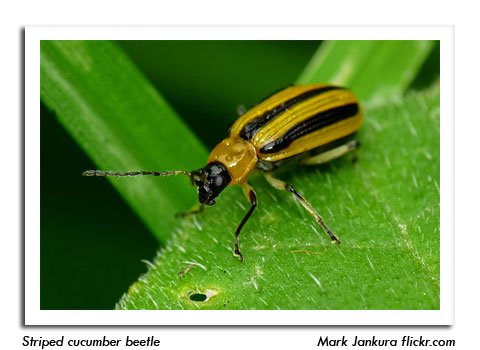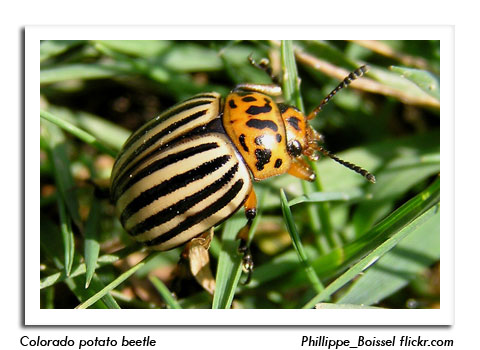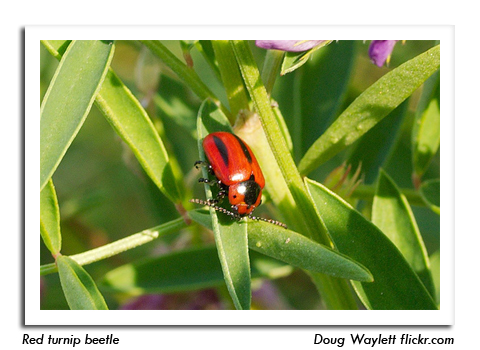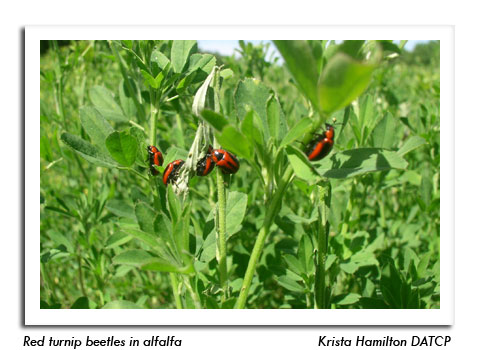
 |
|
|
Vegetables
Volume 59 Number 6 Date 06/05/2014 STRIPED CUCUMBER BEETLE - Seedling and transplanted cucurbits such as cucumbers and melons will be at risk of direct feeding injury and bacterial wilt transmission as beetles continue to emerge this month. This insect is such an effective carrier of the bacterial wilt pathogen that serious crop damage can occur when only 10% of the population is infected. Scouting field edges and interiors 2-3 times per week is advised. Beetle counts should not be allowed to exceed 4-5 per 50 plants. ONION MAGGOT - First generation flies are active near Appleton, Eau Claire, Fond du Lac and Hancock in central Wisconsin. Flies of the spring generation are often the most abundant and damaging, particularly in fields or home gardens where onions are grown in succession. Rotating this year's plantings as far away as possible from last year's onions is perhaps the most basic approach to onion maggot control. Preventative soil insecticides may be considered if maggot damage to the 2013 crop exceeded 5-10%. COLORADO POTATO BEETLE - Adults continue to colonize potato fields and ovipostion has started. The presence of widely-distributed, in-field populations of adults and early larvae suggests systemic insecticides are not adequately controlling populations and a foliar spray may be warranted. The first of two foliar applications of an insect growth regulator or the biological insecticide Bt can be made at egg hatch and again 7-10 days later. IMPORTED CABBAGEWORM - Larvae have emerged statewide. Home gardens and larger cabbage plantings should be checked weekly for the yellow eggs laid singly on plants and velvety green caterpillars with a yellow, longitudinal stripe. The economic threshold for this pest in cabbage is 30% infestation at the transplant to cupping stages. RED TURNIP BEETLE - This occasional pest of vegetables in the Central Sands area of the state was observed in Waushara County alfalfa on June 3, likely feeding on weeds in the field margins. Its hosts include broccoli, cabbage, kohlrabi, radish and turnip, although hoary alyssum, yellow rocket and other mustards are thought to be the primary food plants. Damage to home gardens is rare and was last documented 5-6 years ago near Hayward in Sawyer County. -- Krista Hamilton, DATCP Entomologist 




|
|
|